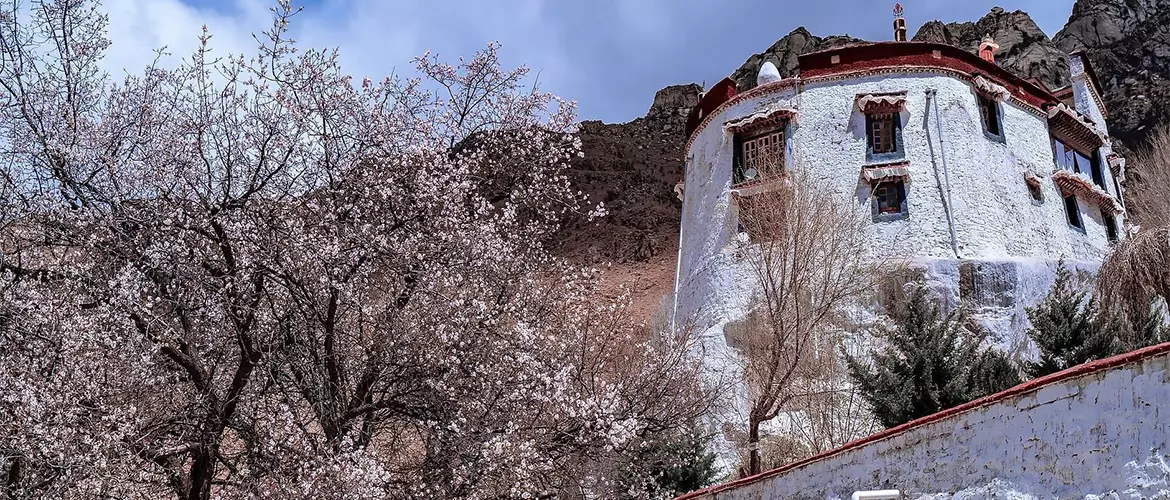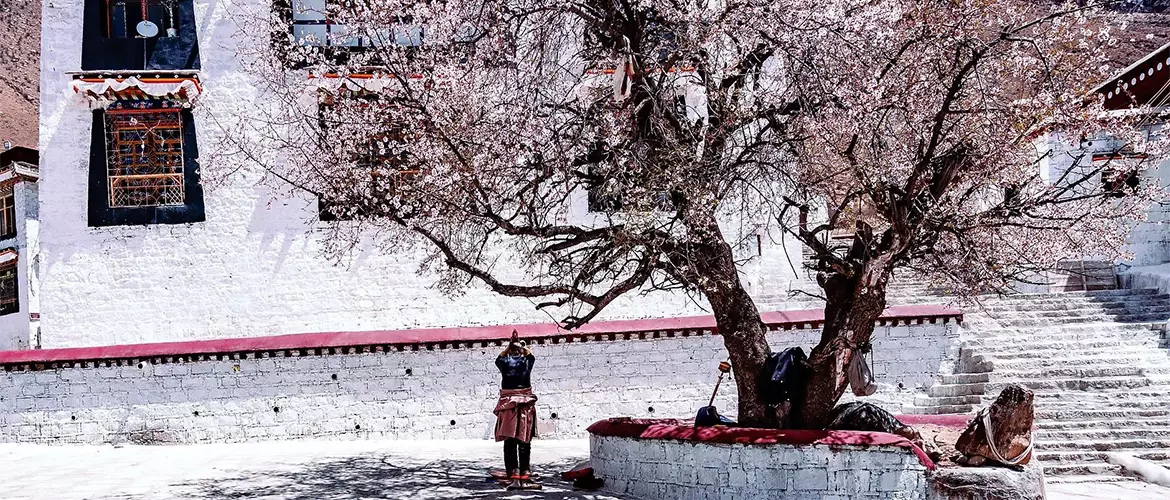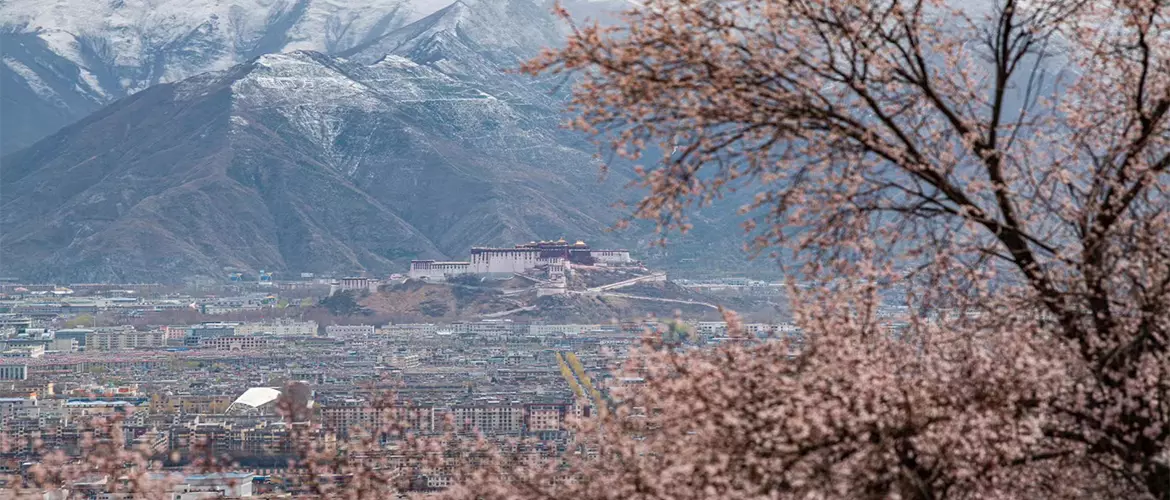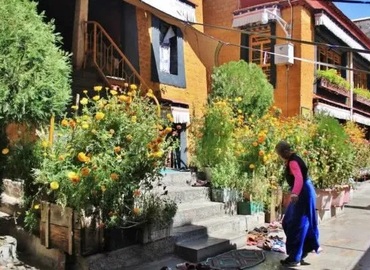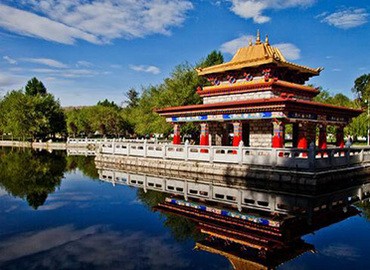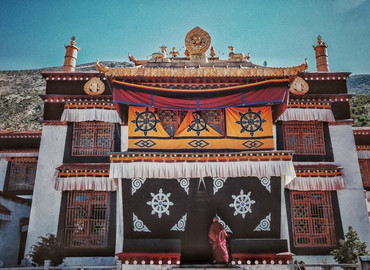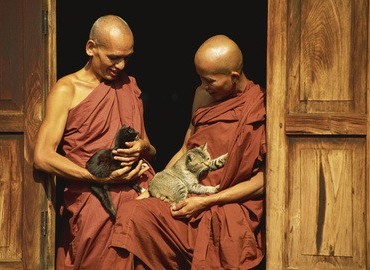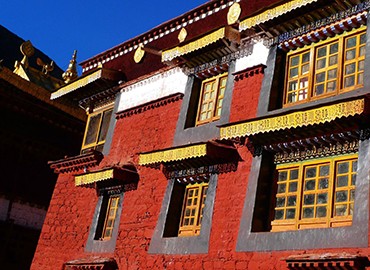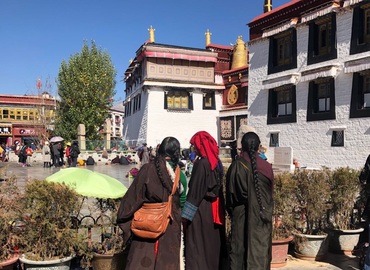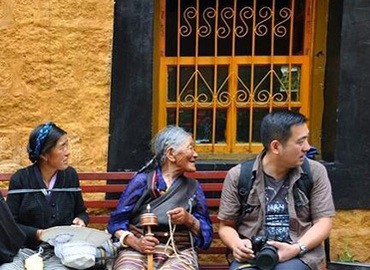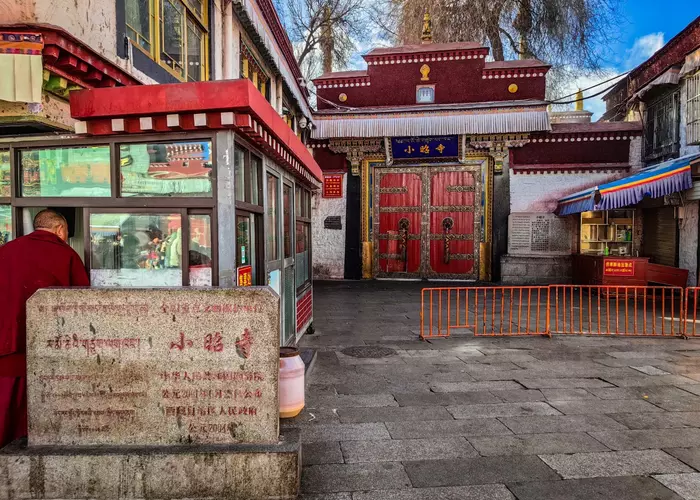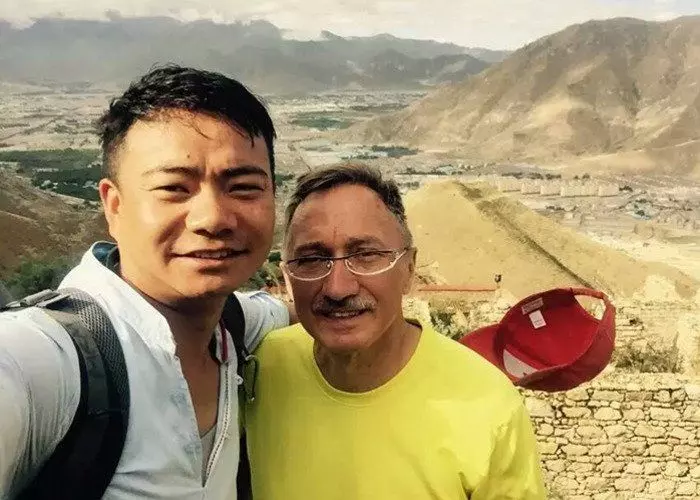Pabonka Monastery (also known as Pabongka Hermitage) is located in the northern suburbs of Lhasa, more than three miles from Sera Monastery and on the slopes of Mount Parasol, facing Potala Palace. There is a huge boulder with an area of more than 300 square meters and above the ground about 20 meters, like a giant tortoise. On top of this huge stone, there was Pabongka Hermitage, which was built by Songtsen Gampo in the seventh century. In the Tibetan language, Pabongka means "big stone palace" and "playing on the stone".
This monastery was initially one of the five meditation sites built by King Songtsen Gampo for his five consorts. Princess Wencheng once resided at Pabonka Monastery, and according to geomantic omen, she designated this place. Also there's a tradition that Dalai Lamas of all generations must go to Pabangka Palace to pay homage to the Buddha and receive precepts as well as celebrate upon obtaining the "Geshe" degree, which holds a special honor in Tibetan Buddhism.
In History
In the 7th century, in order to successfully build the Jokhang Temple, Songtsen Gampo built a nine-story castle on the rock based on Princess Wencheng's calculations. Molten iron was poured into the gaps in the stone walls, and iron chains were used to tighten the walls on all sides to ensure their solidity. After completion, Songtsen Gampo and Princess Wencheng lived here for a short time. After Thonmi Sambhota returned from studying in India, he secluded himself in Pabonka Monastery for three years, where he created the Tibetan script.
In the year 841 AD, the anti-Buddhist king Langdarma burned down the Pabonka Monastery, demolished 108 stupas, and destroyed all the structures. In the mid-11th century, Pabonka was restored by the disciple Zaga of Potowa Rinchen Sel, who reconstructed a two-story chapel. Subsequently, monks from the Kadam School restored the original stupas, Buddha images, and Buddha halls. During the reign of the Fifth Dalai Lama, Pabonka Monastery was repaired and expanded, and another story was added. Pabonka became a part of the Gelug (Yellow Hat) school and remains a monastery of the Gelug tradition today.
Pabonka Monastery was damaged again during the Cultural Revolution and was gradually restored in 1980 to reshape the Buddha in the chapel, which now belongs to Sera Monastery.
Highlights
It takes an hour to walk from the foot of the mountain to Pabonka. There are bushes along the way, and the view becomes wider as you go up. Pabonka still enshrines and worships the throne of King Songtsen Gampo, and the side hall behind the main hall is said to be the former residence of Princess Wencheng. Climbing up to Papangka offers a wide view of Lhasa city.
Hall of the Three Lords
As an integral part of the Pabonka Monastery, the Hall of the Three Lords is situated below the slope to the south of the massive stone. It stands three stories high, with a length of about 9 meters and a width of approximately 5 meters. Inside the hall, there are relief statues of the three ancient lords (Avalokiteshvara, Manjushri, and Vajrapani), and on the right side of the Buddhist altar, there is a statue of Thousand-Armed Avalokiteshvara.
Ten-Day Hall
Ten-Day Hall stands two stories tall, with a length of about 10 meters and a width of 5 meters. It is named because Trisong Detsen and Padmasambhava practiced Buddhism here for ten days. There is a naturally formed relief statue of Palden Lhamo, the female protector god of Tibetan Buddhism. Inside the cave, there are enshrined holy images of Padmasambhava and others.
Residence of Prince Wencheng
The yellow house behind the monastery is said to be the residence of Princess Wencheng. However, what we see so far are those that have been rebuilt in modern times. The millennia-old peach tree in front of the house was planted by Princess Wencheng herself. The slopes around the massive stone are scattered with caves where historical figures such as King Songtsen Gampo practiced.
Travel Tips
Best Time to Visit
The best time to visit Pabonka Monastery is in March and April, when visitors can witness monks debating under peach blossom trees in the spring. The monastery does not require an entrance fee and is open from 9 AM to 5 PM. Debates typically take place around 3 PM, but not regularly.
How to Arrive?
- By Car: It takes approximately half an hour to drive from downtown Lhasa to Pabonka, and the journey from Sera Monastery to Pabonka takes about 10 minutes.
- On Foot: Walking from Lhasa to Pabonka takes around 4 hours, while the trek from Sera Monastery to Pabonka requires about 1.5 hours on foot.
Lhasa
Hike to Sera Utsé Hermitage to experience cultural charm of Tibetan Buddhism and have a panoramic view of Lhasa City.
Email response within 0.5~24 hours.


